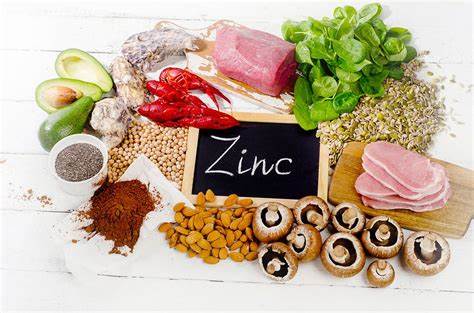
Folic acid – properties and role in the body
Folic acid is also called vitamin B9, vitamin B11 or folacin. Most often we associate with the fact that pregnant women should take it, however, folic acid is needed by everyone and many people suffer from its deficiency. many people suffer from its deficiency. Unfortunately, apart from women who are expecting expecting a baby, hardly anyone thinks about supplementing deficiencies. I although the greatest consequences of too little folic acid causes in fact in pregnant women (foetal defects may occur), we should all pay attention to its appropriate amount in the diet. diet. What is folic acid, what is its role in the body and why is it so important for future mothers? why it is so important for future mothers.
Contents
Folic acid – characteristics

From the very first moments every human being needs folic acid. The need for this component does not diminish until old age. Folic acid (vitamin B9, B11, vitamin M, folate, folacin) is a group of components, which includes about 20 pterin derivatives. Folic acid occurs naturally in many tissues of plants and animals, and was first described in the 1940s, taking a look at spinach leaves. The name acid comes from the Latin folium, meaning leaf. Folic acid is a yellow substance, well soluble in water.
In terms of its chemical structure, folic acid folic acid is a combination of the pterine principle of p-aminobenzoic acid (PABA) and glutamic acid. The highest Folic acid has the highest biological activity as tetrahydrofolate (TH4-folian).
Folic acid – effects and properties
Folic acid participates in the normal growth of all cells and regulates their functioning. It does this through the synthesis of nucleic acids, from which the genetic matrix DNA is formed – a process in which vitamin B9 also takes an active part. In combination with vitamin B12, folic acid participates in the formation and development of red blood cells, so it has a blood-forming effect and can counteract anemia. Some scientists claim that folic acid can prevent some cancers, especially those related to the female reproductive organs, such as cervical cancer.
In combination with other vitamins of the B group vitamins, folic acid influences the correct level of homocysteine – an an amino acid, whose high concentration may disrupt physiological physiological processes of cells (especially dangerous for cells which are under cells undergoing intensive development). Recent data also show, The most recent data also show that too much homocysteine in the body can contribute The body has a high homocysteine content, which can lead to heart diseases, heart attacks and strokes. Homocysteine has also been shown to increase the level of bad cholesterol, which in turn It is also known as homocysteine. This amino acid decreases the level of nitric oxide, a compound that dilates vasodilators.
The human body tries to maintain normal levels of homocysteine by converting it into cysteine, which is found in virtually all proteins, including in hair keratin and methionine. The latter protein produces serotonin, which improves our mood and enables for calm, healthy relaxation and sound sleep, and noradrenaline, which is responsible for our energy for action during the day day. These are the so called ‘happy hormones’ which play a very important role in the Therefore, it is worth taking care of their appropriate level. Research shows that people with depression and depressed mood syndrome Folic acid deficiency is often observed in people with depression and depressed mood syndrome.
Folic acid deficiency – symptoms
Folicacid deficiency can lead to:
- anaemia;
- degenerative disorders;
- osteoporosis;
- cardiovascular diseases;
- fetal malformations.
Folic acid excess – symptoms
Folic acid is a vitamin that we we can have too much of. It is estimated that too high a level of folic acid may increase the process of carcinogenesis in early stages of cancers.
Consuming folic acid in excessive amounts too much can mask the consequences of B12 vitamin deficiency, which is very dangerous, since a deficiency of this leads to anemia, changes in the nervous system.., as well as mental disorders.
Where does folic acid occur – sources

The highest amounts of folic acid can be found in dark green vegetables, legumes, fruits, and cereal products. Unfortunately, during heat treatment and exposure to sunlight, vitamin B9 is quickly broken down. During cooking products lose up to 70% of folic acid, and long storage of food can reduce the amount by half. What’s more, the human body does not have the capacity to store this vitamin for long periods of time, so it needs to be supplied regularly. Folic acid absorption is improved by vitamin C (its addition to some extent protects vitamin B9 from degradation), other B vitamins, and biotin (vitamin H).
Among the best sources of folic acid are:
- lentils (1 cup of cooked lentils is about 326 µg);
- chickpeas (1 glass of cooked chickpeas equals approximately 310 µg)
- pinto beans (1 glass is approx. 310 µg);
- asparagus (200 g equals approx. 298 µg);
- Spinach (200 g is approx. 292 µg);
- Romaine lettuce (200 g is approx. 272 µg);
- broccoli (200 g are approx. 194 µg);
- Turnip leaves (150 g are approx. 177 µg);
- Savoy cabbage (200 g are approx. 160 µg);
- beetroot (180 g is approx. 144 µg);
- Brussels sprouts (200 g are approx. 122 µg);
- avocados (140 g are approx. 113 µg);
- parsley (60 g are approx. 91 µg);
- Cauliflower (200 g are approx. 88 µg);
- Green peas (140 g are approx. 88 µg);
- quinoa (180 g is approx. 76 µg);
- oranges (1 unit is approx. 72µg);
- sunflower seeds (30 g tops approx. 68 µg).
It is interesting to note that vitamin B9 is one of the few whose synthetic form is absorbed better better than from food, because it is almost 100%, while from food We retain about 50% of this component from food.
When does the level of folate in our body decrease? Its considerable loss happens when we live under chronic stress, drink large amounts of coffee and alcohol, smoke cigarettes. Folic acid also decays when we take acetylsalicylic acid and some contraceptives. Folic acid deficiencies also occur with restrictive diets.
Folic acid dosage
The recommended daily intake of folic acid
depending on the age group is as follows:
- children: from 1. to 3. years of age – 150 μg; from 4 to 6 years of age – 200 μg; from 7 to 9 years of age – 300 μg
- boys: 10 to 12 years of age – 300 μg; from 13 to 18 years – 400 μg;
- girls: 10 to 12 years Girls: 10 to 12 years 300 μg; 13 to 18 years 400 μg;
- males: 400 μg;
- females: 400 μg;
- pregnant women: 600 μg;
- lactating women: 500 μg.
Folic acid during pregnancy
Specialists recommend taking folic acid not only for women who have already become pregnant, but also for those who are trying to have a baby. The baby’s first nerve seed, also called the neural tube, which then develops into the spinal cord and brain, begins to form between 17 and 30 days after conception. This is the period when many women do not yet know that they are pregnant, and already then they show a greater need for vitamin B9.

Too little folic acid during the formation of these organs causes defects in their development. This can lead to amniotic fluid entering the spinal cord and brain, and their development is stopped. In such a situation, cerebrospinal hernias, brainlessness and spina bifida can occur. In the case of a cerebral aponeurosis, the child may only survive a few hours. Spina bifida causes inertia of the lower part of the body, often combined with mental retardation.
In Poland, such defects occur 1-2 per 1000 births, which is quite a high number. Therefore, . women planning pregnancy are recommended to take folic acid supplementation Folic acid supplementation in the amount of 0.4 mg a day is recommended for several months before They should therefore be advised to take a folic acid supplement of 0.4 mg daily for several months before they start trying to have a baby.
Folic acid dosage during pregnancy
Vitamin B9 is considered to be The most important during pregnancy. It can of course be consumed It can, of course, be taken with food through a diet. However, as However, as I mentioned earlier, the absorption of folic acid from food is absorbed less well from food than in its synthetic form. This is why pregnant women should rely on a good supplementation of this component.
During pregnancy folic acid is involved Folic acid is involved in cell regulation and contributes to the normal development of red blood cells. folic acid is involved in cellular regulation and contributes to the normal development of red blood cells. It is worth remembering that in pregnant women the safety of not only the developing baby is important, It is worth remembering that in pregnant women the safety of not only the developing baby but also the future mother is important. In such a state the mother can easily catch infections or get anaemia. This is why it is important to eat a proper diet and to take supplements under medical supervision. doctor-controlled supplementation. Studies show that taking folic acid folic acid during pregnancy reduces the risk of neural tube defects Folic acid intake during pregnancy reduces the risk of neural tube defects in the child by up to 70%, and long-term intake of this vitamin protects women from cervical cancer.
How long to take folic acid during pregnancy?
Doctors recommend taking folic acid Doctors recommend taking folic acid until the 16th week of pregnancy and emphasise that its Folic acid supplementation before and at the beginning of pregnancy is most important, It is then that a deficiency in this mineral can have the worst consequences. Systematic folic acid intake during pregnancy is also about 0.4 mg per day. There is no need to worry about an overdose of this vitamin, as it It is excreted in the urine.
There are cases in which There are cases in which it is reasonable to take higher doses of folic acid during pregnancy. pregnancy. These include:
- twin pregnancy;
- BMI index above 30;
- smoking.
A dose of 1 mg of folic acid is recommended also to pregnant women suffering from megaloblasticity and hyperhomocysteinemia. Women with epilepsy who have had previous pregnancies with neural tube defects should take up to 4 mg of folic acid per day.
A diet rich in folic acid – the rules

Although folic acid is most often Although folic acid is most often heard about in the context of pregnant women, it is needed by folic acid is needed by everyone. People who do not have an increased need for this do not need additional folic acid supplementation supplementation, as long as they ensure an adequate amount of folic acid in their diet. folic acid in their diet. How to make a diet rich in folic acid?
How do I increase the amount of folic acid in the diet?
There are several principles we can follow to increase the amount of folic acid in our diet. diet.
Eat plenty of fruit and vegetables
Vegetables and fruits are the best source of folate in its natural form. In addition, your diet should your diet should also include other sources of folic acid, such as wholemeal bread and cereals. In addition, your diet should also include other sources of folate, such as wholemeal bread and cereals.
Choose the least processed
When exposed to high temperatures, folic acid folic acid is quickly broken down by heat. It is also sensitive to light. It is also sensitive to light, so food should be stored in tightly Therefore, food should be stored in tightly closed packages, in dark places. If we have to cook vegetables, it is best to do it as short as possible If we do have to cook vegetables, it is best to do it as briefly as possible and in a minimum amount of water, which should not be If we do have to cook vegetables, it is best to do it for as short a time as possible and in a minimum amount of water, which should not be poured away as it takes up a lot of the folic acid. The water after The water after cooking vegetables can be used for making a sauce, for example.
Supplementation
If you do not have the possibility to implement If you are unable to introduce products containing folic acid into your diet and you If you are not able to eat foods containing folate and you suspect that you are deficient in folate, you should take a folate supplement. The synthetic form of vitamin B9 is very well absorbed and will certainly help us to supplement deficiencies. us to supplement deficiencies.
Folic acid – summary
Folic acid, otherwise known as vitamin B9 or folacin is a component which is necessary every person, both children and adults. The highest The greatest need for this component are women during pregnancy, especially at its beginning, because vitamin B9 significantly reduces the risk of neural tube defects. the risk of neural tube defects, which may result in damage to the spinal cord and brain. Doctors recommend folic acid should be taken a few months before starting to try to have a baby and Folic acid should be taken a few months before trying to have a baby, and at least until the 16th week of pregnancy. Research shows that folic acid can also prevent cervical cancer, which is why Folic acid supplementation is recommended for women.
Folate can be obtained from food, its largest amounts are found in vegetables and fruit raw vegetables and fruits. High temperature and light influence the rapid decomposition of folic acid. Therefore, in order to increase the amount of folic acid in the diet, to increase its amount in the diet, food processing should be limited to a minimum and It is also a good source of folic acid. Vitamin B9 is one of the few whose synthetic form is absorbed better than the one from food, so pregnant women and people and people who suspect themselves of folic acid deficiency, should rely on supplementation.



